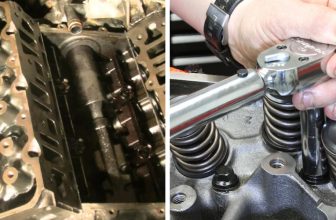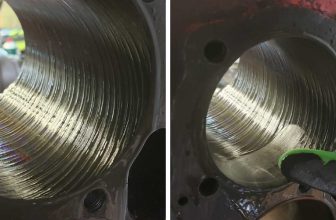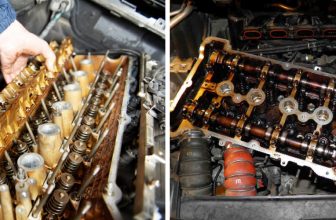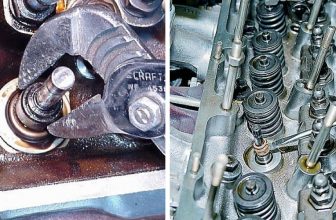How to Fix Coolant Leaking Into Cylinder
When your car’s engine starts making weird noises, it may be a sign that there is something wrong with the coolant. One common issue is coolant leaking into the cylinders, which can cause major problems down the road if not fixed. In this blog post, we’ll show you how to fix coolant leaking into cylinder. So stay safe and keep your car running smoothly!

What Is Coolant Leaking Into the Cylinder?
If your car’s coolant is leaking into the cylinder, it’s likely due to a faulty head gasket. The head gasket is a crucial piece of hardware that seals the engine block from the cylinder head. Coolant can escape and enter the cylinder when it fails, causing a host of problems.
In addition to reducing the engine’s efficiency, a coolant leak can lead to engine overheating and potentially serious damage to the engine internals. If you suspect your car has a coolant leak, take it to a qualified mechanic for diagnosis and repair. Ignoring the problem could result in costly repairs down the road.
Why Should You Fix Coolant Leaking Into Cylinder?
A car engine typically contains a coolant, which helps to keep the engine at a safe operating temperature. However, if coolant leaks into the cylinder, it can cause several problems. First, the coolant can dilute the lubricating oil, leading to increased wear on engine components. Second, it can cause the engine to overheat, potentially leading to seizures. Finally, it can lead to the corrosion of metal parts.
As a result, fixing any leaks as soon as possible is important to avoid these potentially damaging consequences. In addition, leaking coolant can also cause damage to other engine parts, such as the bearings and seals. In extreme cases, it can even cause engine failure. For these reasons, it is important to take action to fix any leaks as soon as they are discovered.
Things to Consider:
There are a few things to keep in mind when fixing coolant leaking into the cylinder:
Proper Diagnosis:
Before attempting any repairs, it’s important to accurately diagnose the source of the leak. This will ensure that the correct repair is performed and prevent further issues down the road.
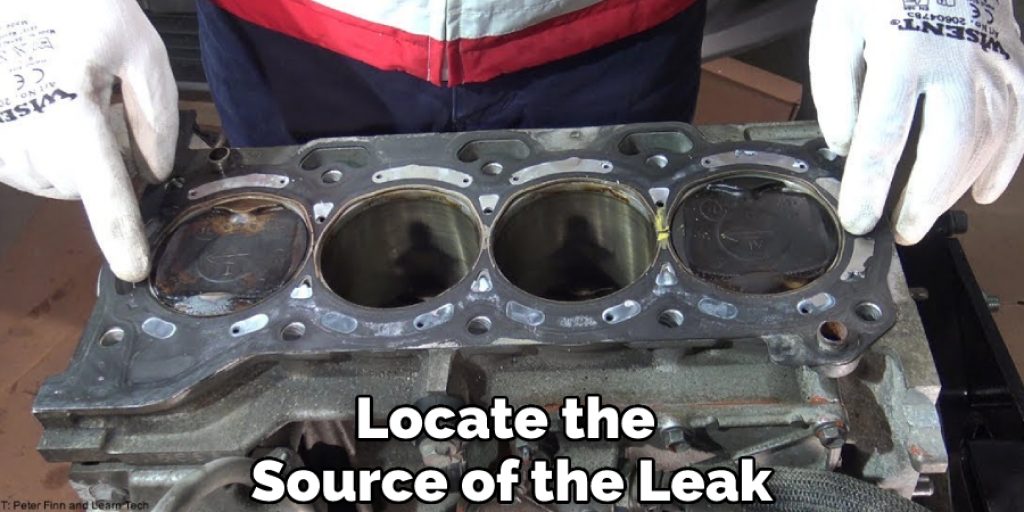
Quality Parts:
When replacing faulty parts, make sure to use high-quality replacements that are specifically designed for your vehicle. This will ensure a proper fit and prevent future leaks.
Regular Maintenance:
To prevent future coolant leaks, it’s important to stay up-to-date on regular maintenance such as changing the coolant and checking all hoses and connections for any signs of wear or damage.
Needed Materials:
In order to fix the coolant leaking into the cylinder, you’ll need the following materials:
New Head Gasket:
This is the key component that will need to be replaced in order to fix the leak.
Gasket Sealant:
This will help ensure a proper seal between the head gasket and engine block.
Engine Coolant:
It’s important to use the correct type of coolant recommended for your vehicle make and model.
Wrench Set:
You’ll need a set of wrenches to remove and replace the head gasket.
Other Tools:
Depending on your vehicle, you may also need additional tools such as a torque wrench, socket set, and pliers.
9 Steps to Follow on How to Fix Coolant Leaking Into Cylinder
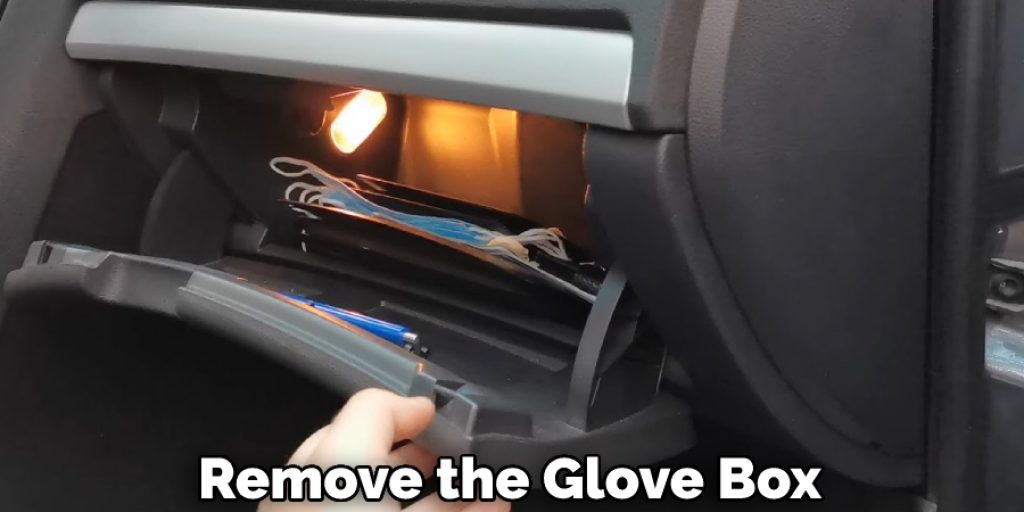
Step 1: Determine the Location of The Coolant Leak
The first step is to identify where the coolant is leaking from. Coolant can leak from many places in the engine, so it’s important to take your time and locate the source of the leak. If you can’t find the leak, try adding dye to the coolant. This will make it easier to see where the coolant is leaking from. The most common places for a coolant leak are the head gasket, intake manifold gasket, and water pump.
You can also check for any visible signs of corrosion or damage to the gasket, hoses, or connections in the engine. It’s important to accurately diagnose the source of the leak before proceeding with any repairs.
Step 2: Check the Radiator
The radiator is one of the most common places where coolant leaks. If you suspect that the radiator is the source of the leak, check it for cracks or holes. If you find any damage, replace the radiator. It’s important to also check the radiator hoses for any signs of wear or damage.
You can also test the radiator for leaks by using a pressure tester. This will help you identify any hidden leaks that may not be visible to the naked eye.
Step 3: Check the Water Pump
The water pump is another common source of coolant leaks. To check the water pump, remove the drive belt and inspect the pump for leaks. If you find any damage, replace the water pump. It’s also important to check the water pump gasket for any signs of wear or damage.

The water pump can also be tested for leaks using a pressure tester. Make sure to replace the gasket and any damaged parts before reassembling.
Step 4: Check The Head Gasket
Another common cause of coolant leaks is a blown head gasket. To check for a blown head gasket, remove the spark plugs and inspect them for evidence of coolant. If you see coolant on the plugs, replace the head gasket. It’s also important to check the head gasket for any signs of wear or damage before replacing it.
But, before replacing the head gasket, it’s important to ensure that the engine block and cylinder head are not warped. If they are warped, they will need to be machined before a new head gasket is installed.
Step 5: Check The Intake Gasket
The intake gasket is another common source of coolant leaks. To check the intake gasket, remove the air filter and look for signs of coolant leaks. If you see any damage, replace the intake gasket. It’s also important to check the gasket for any signs of wear or damage before replacing.
You can also test the intake gasket for leaks using a smoke tester. This will help you identify any hidden leaks that may not be visible to the naked eye.
Step 6: Check The Thermostat
The thermostat is another common source of coolant leaks. To check the thermostat, remove it from the engine and inspect it for cracks or holes. If you find any damage, replace the thermostat. It’s also important to check the thermostat housing for any signs of wear or damage.
You can also test the thermostat for proper functioning by placing it in a pot of boiling water. If it doesn’t open, then it will need to be replaced.
Step 7: Check The Heater Core
The heater core is another common source of coolant leaks. To check it, remove the glove box and look for signs of coolant around the heater core. If you see any, replace the core as soon as possible. It’s also important to check the heater hoses for any signs of wear or damage.
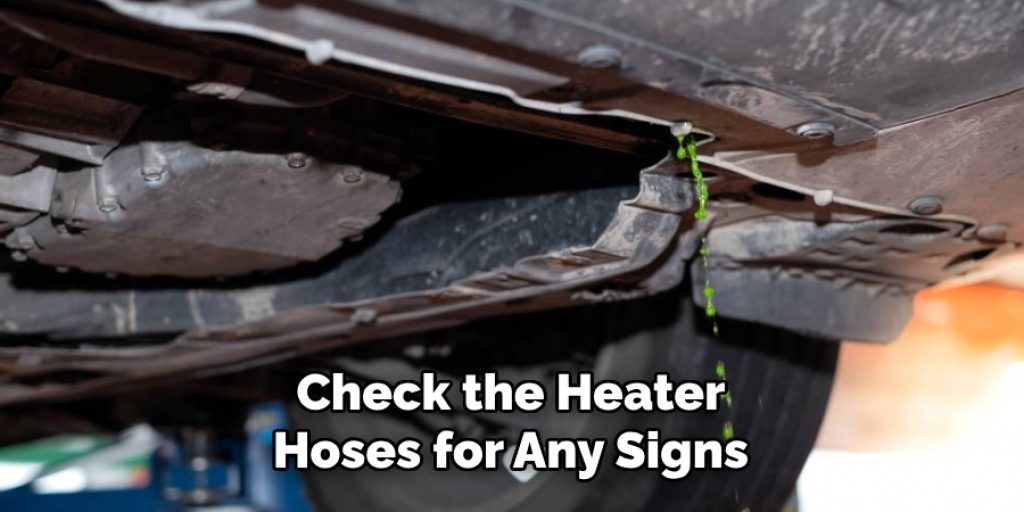
You can also test the heater core for leaks using a pressure tester. Make sure to replace any damaged parts before reassembling. It’s also recommended that the heater core be flushed out to prevent any future leaks.
Step 8: Replace The Faulty Parts
Once you have identified and fixed the source of the coolant leak, it’s time to replace any damaged parts. Make sure to use high-quality replacement parts that are specifically designed for your vehicle. Otherwise, you may end up with future leaks and more costly repairs. It’s important to also follow the manufacturer’s instructions for installation.
You may also want to consider replacing other parts in the cooling system that could have been affected by the leak, such as hoses or clamps. The key is to make sure that the entire system is properly sealed and functioning before moving on to the next step.
Step 9: Refill The Coolant And Test
After replacing any faulty parts, refill the coolant and test the system. Start the engine and let it run for a few minutes to check for any leaks. If no leaks are found, then you have successfully fixed the coolant leak into the cylinder. Remember to check regularly.
If you follow these steps and still can’t find the source of the leak, it’s time to take your car to a mechanic. They will be able to pinpoint the source of the leak and make the necessary repairs.
That’s it! You’ve now learned how to fix coolant leaking into cylinder. If you have any questions or comments, please feel free to leave them below.
How to Diagnose a Coolant Leak in Your Car
Leaks in your car’s cooling system can cause major engine damage if left unrepaired. Luckily, there are a few easy ways to diagnose a coolant leak. First, check the level of coolant in the radiator. If it is low, then you likely have a leak. Another way to check for a leak is to look for puddles of coolant beneath your car after it has been parked for a while.
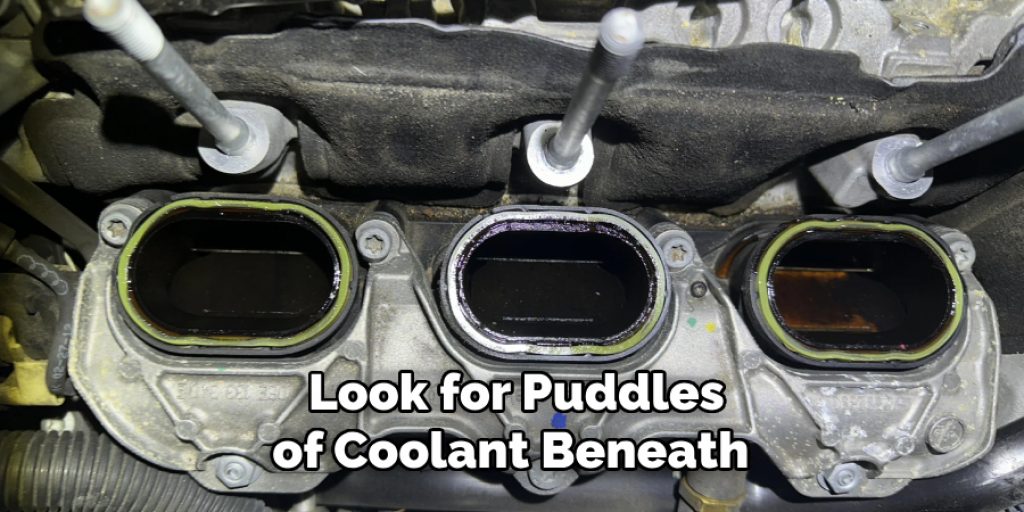
If you see any evidence of a leak, then it’s time to take your car to a mechanic and have it repaired. Left unaddressed, a coolant leak can result in costly engine damage, so it’s important to be vigilant about checking for leaks and getting them repaired as soon as possible.
What Are the Common Causes of A Coolant Leak?
Most coolant leaks occur in the engine, specifically in the gaskets or seals. The gaskets seal the spaces between engine components; over time, they can deteriorate and develop leaks. Similarly, seals are used to seal gaps between moving parts, such as the crankshaft and the engine block. If these seals wear out, they can also cause coolant leaks. In addition, coolant hoses can develop holes or cracks over time, which can also lead to leaks.
Another common cause of a coolant leak is a problem with the radiator cap. The radiator cap is responsible for maintaining proper pressure in the cooling system; if it is not functioning properly, it can cause the coolant to leak. Finally, thermostat gaskets can also fail and cause coolant to leak from the engine. Whether the cause is a faulty gasket, seal, hose, or radiator cap, a coolant leak can be a serious problem that should be fixed as soon as possible.
What Are the Potential Dangers of A Car With A Coolant Leak?
A car coolant leak is a serious problem that should be fixed immediately. Coolant, also known as antifreeze, is vital for regulating your engine’s temperature. When there is a leak, the coolant level in the radiator drops, which can cause the engine to overheat, leading to serious damage such as a blown head gasket or even a cracked engine block.
In addition, coolant is poisonous to animals and humans, so a leak could pose a serious health risk. If you suspect your car has a coolant leak, it’s important to take it to a mechanic immediately. With proper care, most cars can continue to run safely and efficiently for many years. Keep reading for more information about how to fix coolant leaking into cylinder.
How Much Does It Cost to Fix a Coolant Leak?
A coolant leak can be a serious problem for your car, but fortunately, it is usually a relatively easy and inexpensive fix. The most common cause of a coolant leak is a hole in the radiator. A small hole can often be patched with a radiator repair kit, but a larger hole will require the entire radiator to be replaced. Another common cause of coolant leaks is a loose hose or leaking gasket. These can usually be tightened or replaced without too much difficulty.
In some cases, however, the entire cooling system may need to be flushed and refilled. This is a more expensive repair, but it is often necessary if the coolant system has become contaminated. No matter what the cause of your coolant leak, it is important to have it repaired as soon as possible to avoid serious damage to your engine.
How to Prevent Coolant Leaks in the First Place
Coolant leaks are one of the most common problems that car owners face. Not only are they unsightly, but they can also lead to serious engine damage if left unchecked. Thankfully, there are a few simple things that you can do to help prevent coolant leaks in the first place. First, check your hoses and clamps regularly for wear and tear. Then, if you notice any cracks or leaks, replace the parts as soon as possible.
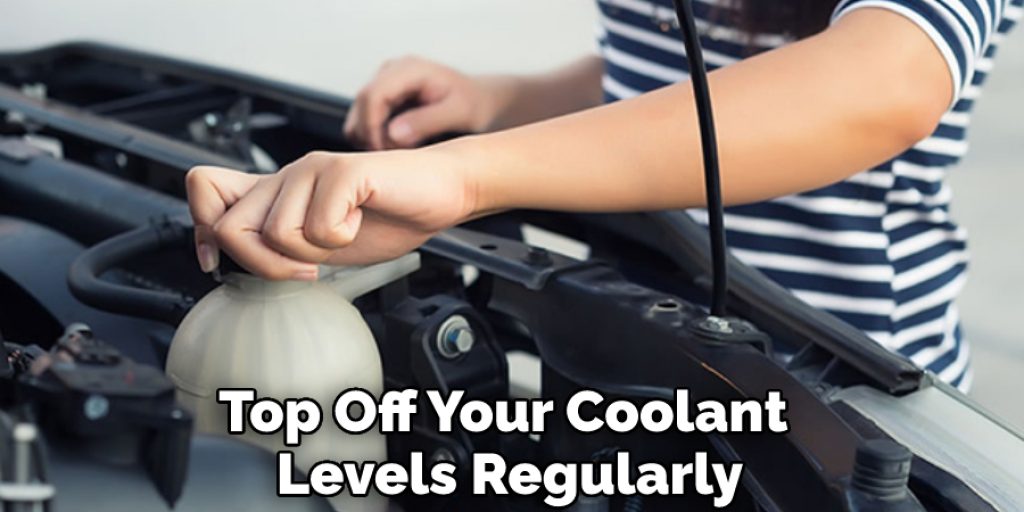
Second, don’t forget to top off your coolant levels regularly. This will help to ensure that there is always enough pressure in the system, making it less likely for leaks to occur. Finally, be sure to have your cooling system serviced by a qualified mechanic every few years. This will help to catch any potential problems before they have a chance to cause serious damage. Following these simple tips can help keep your car running smoothly for years to come.
Frequently Asked Questions:
Q: Can I Drive My Car With a Coolant Leak?
A: It is not recommended to drive your car with a coolant leak. If the leak is severe, it can cause serious damage to your engine. It’s best to have it repaired as soon as possible. You can temporarily patch a small leak with a radiator repair kit, but it’s important to have the issue fixed by a professional mechanic. It’s also important to regularly check your coolant levels and top them off if necessary.
Q: Can You Fix a Coolant Leak Without Replacing the Radiator?
A: It depends on the severity of the leak. Small holes in the radiator can often be patched with a repair kit, but larger leaks may require replacing the entire radiator. It’s best to consult with a mechanic to determine the best course of action for your specific situation. But in general, it’s important to address any coolant leaks as soon as possible to avoid further damage to your engine.
Q: How Long Can You Drive with a Coolant Leak?
A: It’s not recommended to drive with a coolant leak, even if it is minor. The leak can cause your engine to overheat and lead to serious damage. It’s best to have the issue repaired as soon as possible. If you are unable to immediately get your car repaired, be sure to regularly check your coolant levels and top them off if necessary. But it’s important not to ignore a coolant leak for an extended period of time.
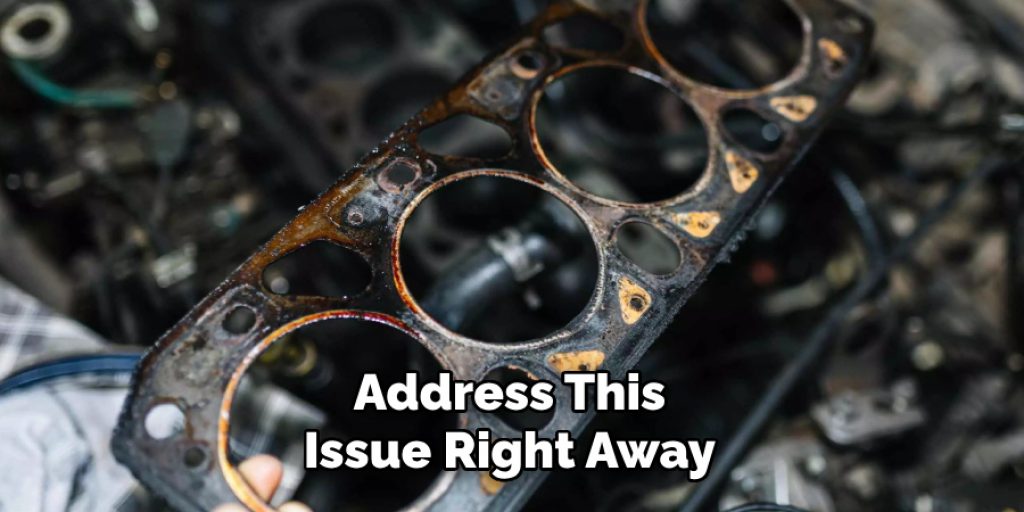
Q: What Causes White Smoke From the Exhaust with a Coolant Leak?
A: White smoke coming from the exhaust can be a sign of a coolant leak. This is usually caused by coolant leaking into the combustion chamber and burning along with the fuel. It’s important to address this issue right away, as it can cause serious damage to your engine if left unchecked. Have your car inspected by a mechanic to determine the cause of the leak and have it repaired as soon as possible.
Conclusion
If your car leaks coolant into the cylinders, it’s important to take action quickly to avoid engine damage. The best way to fix the problem is to replace the head gasket. However, if you don’t have the time or money for a full repair, a few temporary solutions can help stop the leak. Thanks for reading our post about how to fix coolant leaking into cylinder.

